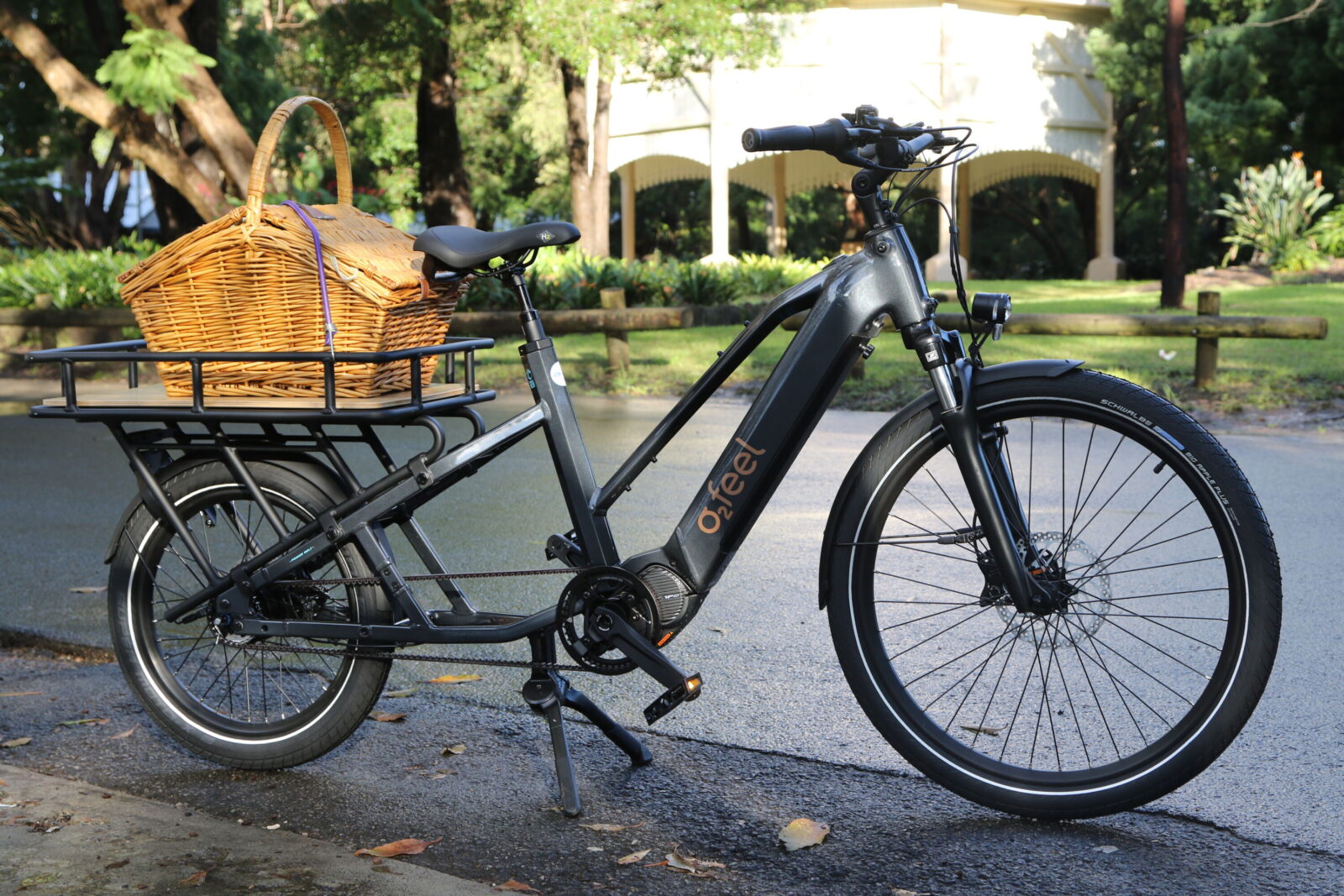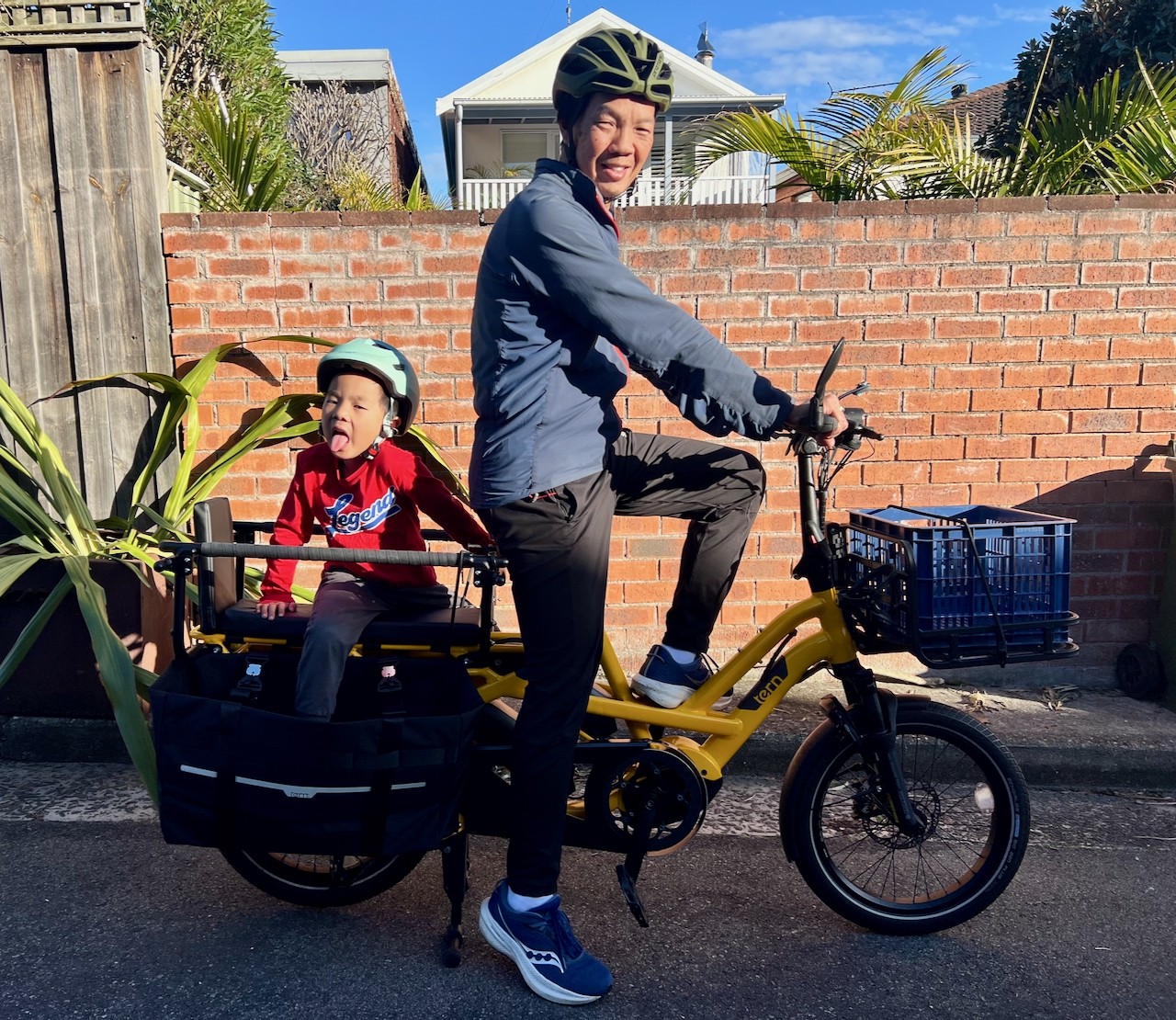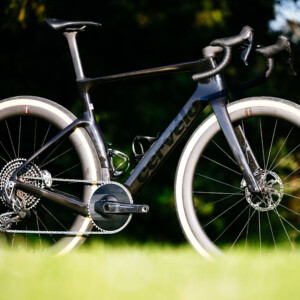Ready to dive into the world of e-cargo bikes? Four years on, Anthony Tan remains a convert and lists his must-haves.
Benno, E-Mono, Eunorau, Ezee, Tern, Tribe, Vamos, Yuba, O2Feel, Trek…
The list of brands and their line-ups is long and, due to their increasing popularity, continues to grow.
So, where to start?
Well, before going into a bike shop and handing over your hard-earned, do lots of research, because the fact is, cargo bikes don’t come cheap. Think five grand – and the rest – for a decent one.
Also, not all bike shops carry cargo bikes. Where I live in Sydney, I would say less than one in five carries them. And some only carry one brand, making it difficult to compare.

The first thing you need to ask yourself is: What will I be transporting, and how often?
Kids (how many – and don’t forget your child has friends that often need taking home!), groceries (max. number of bags), a change of clothes (gym gear/suit bag/party duds), a slab or two of beer – or all of the above?
My first piece of advice would be to say that 95 per cent of cargo bikes, while they carry lots of stuff, are not suited towards touring/bikepacking adventures. For that, stick to your non-electric bike with panniers, because being stuck in the middle of nowhere with a 30-kilogram (or more) e-cargo bike and nowhere to charge your drained battery is NOT fun.
I was a relative early adopter (in Australia, anyway) and purchased my first cargo bike in September 2021.
For me, the purpose was to transport my then nearly two-year-old son to various beaches, parks, and playgrounds near where I lived in Sydney’s east; I almost died of boredom going to the same ones. No round trip would last longer than 20km, and including accessories, I didn’t want to spend more than $5K.
After an hour of testing three different brands, I went with a rear-drive motor, which dispenses the same amount of power regardless of input from the pedals (front-drive hubs also operate in the same way). This bike greatly underwhelmed me, and within seven months, I had upgraded my cargo bike (read: traded in my first and parted with another $5K) to one with a mid-drive motor that provides a more realistic riding experience.
It’s the same cargo bike I own today.
Needless to say, it’s been a life-altering experience – in a good way!
While I occasionally miss the throttle from my old bike (it’s generally not possible to have these on mid-drive machines), especially when taking off from traffic lights, I’ve found everything else to be superior.
It’s hard to get your head around paying what you would for a high-end road or mountain bike. But now armed with four years’ reflection, I’d say as much thought, if not more, has gone into the making of my cargo bike as a lightweight road steed.
Regardless of purpose, if you’re already a keen cyclist – and I assume you are because you’re reading this esteemed publication! – Here are five things to consider before buying:
- Mid-drive any day. Not only will you have better weight distribution, which translates to better handling, the pedalling experience on a mid-drive (as opposed to a front or rear hub-drive) cargo bike is like night and day. As power is metered out according to the effort you put in, your battery will also last longer, as will your chain and cassette (although some high-end models come equipped with a Gates belt drive system that is claimed to be virtually maintenance-free).
- Lugging front or rear? Cargo bikes that transport whatever they’re carrying in front (as opposed to the more traditional way, at the rear) via a large tub are great in principle. In heavily built-up areas, however, they are less manoeuvrable simply because they’re wider (around 60-70cm) and usually have a longer wheelbase.
- Talking the torque. Measured in Newton Metres (Nm), torque is the rotational force that the electric motor applies to the crankset. It is hugely important when hauling stuff up hills, and if your gross weight exceeds 100kg and you live in a moderately hilly or very hilly area, then look for a cargo bike with at least 70Nm of torque.
- Accessories add up. Just like many European-branded cars, the list of accessories can appear endless and can easily add another 15-20 per cent on top of the base price. Likely inclusions: kids seats/cushions; ‘monkey bars’ (a sturdy frame around the child seat); storage bags; a second battery (for increased mileage, not extra power); a front rack (often called a ‘bread basket’), lights (if not included, but often are); and anti-theft locks and/or an alarm.
- Service it – and regularly. Because of the extra weight, items like brake pads, chains and cables will wear out much faster for the same mileage. Find a trusted mechanic who knows cargo bikes and can spot wear and tear, and service it at 6-12 month intervals. You wouldn’t skip a regular service on your car, would you? To paraphrase my Dad, do not be “tight as a frog’s arse” and imperil yourself and your precious cargo!

Anthony Tan
Anthony Tan - One of Bicycling Australia’s longest-serving columnists, ‘Tan Man’ has a deep passion for the sport and is a natural communicator.


